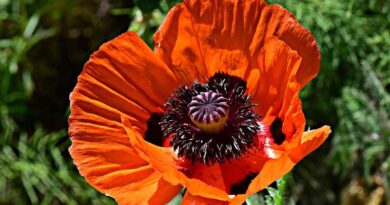
China: Technical Guidance Issued for Disease and Pest Management in Autumn-Sown and Winter Rapeseed Seedlings, 2025
Release Date: October 30, 2025
Source: National Agricultural Technology Promotion Network
08 November 2025, China: Since mid-to-late September 2025, prolonged rainfall and flooding in southwest China and the middle and lower reaches of the Yangtze River have resulted in increased soil moisture levels in major winter rapeseed-producing areas. These conditions are favorable for the emergence of various diseases and pests affecting rapeseed seedlings, including wilt disease, sudden fall disease, mycosis, root swelling disease, and monkey leaf shell infestations. In response, technical guidance has been issued to strengthen disease and pest prevention and control during the rapeseed seedling period and to support a successful harvest.
Key Targets for Prevention and Control
The focus is on managing diseases such as wilt disease (root rot), sudden collapse disease, bacteriosis, root swelling disease, and downy mildew, as well as pests like aphids and monkey leaf shell. Additional attention is advised for black rot, white spot, and black spot diseases, as well as underground pests and Lepidoptera species such as vegetable green worms and moths.
Technical Measures
1. Seed Selection:
Farmers are advised to choose high-yielding rapeseed varieties suited to local conditions and resistant to density, lodging, and disease. In areas severely affected by root swelling disease, resistant varieties such as Huayou Mixed 62R, 5R, 115R, Shengguang 165R, and Zhongyou 926 are recommended, with appropriate delays in sowing.
2. Agricultural Control:
Crop rotation with cereals like wheat or barley is encouraged in areas affected by bacteronuclear disease, as it reduces pathogen presence. Soil treatment with biological agents such as Coniothyrium minitans or lime nitrogen is also recommended in areas affected by nucleosis or rhizome disease.
3. Seed Treatment:
Seed coating using registered protectants is advised, with thiamethoxam-based seed treatments suggested for pest management and control of wilt disease.
4. Chemical Control:
At early signs of disease, foliar sprays containing fungicides such as prothioconazole or fluoxastrobin may be applied at the stem base. Downy mildew can be managed with agents like ethyl garlic or mancozeb. Aphids may be treated with biological or chemical products such as CQMa421 or thiamethoxam. For Lepidoptera pests, chlorantraniliprole or similar insecticides may be used. Growth regulators like brassinolide or diethyl aminoethyl hexanoate can be added during spraying to enhance crop resilience.
These measures, when applied locally and timely, are expected to improve disease and pest management efficiency, helping to secure rapeseed seedling health and future crop productivity.
Also Read: UPL Limited Reports Strong Q2 Performance, Advanta and UPL Corp Drive Growth
📢 If You’re in Agriculture, Make Sure the Right People Hear Your Story.
From product launches to strategic announcements, Global Agriculture offers unmatched visibility across international agri-business markets. Connect with us at pr@global-agriculture.com to explore editorial and advertising opportunities that reach the right audience, worldwide.






